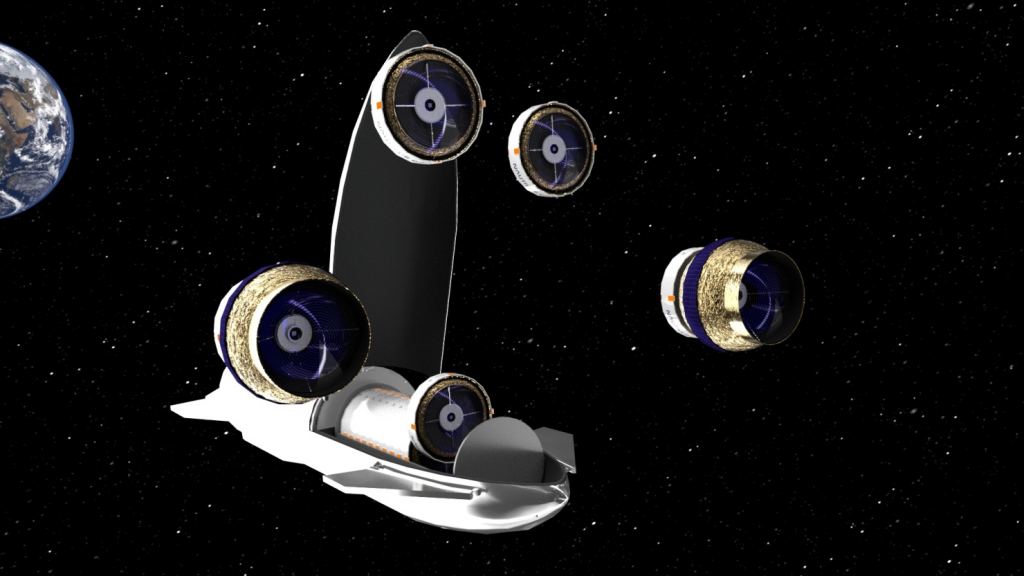Thin flat lenses could revolutionize space telescopes
- July 20, 2023
- 0
Due to the laws of physics, there are two basic rules for telescopes. First, the larger the main lens or mirror, the higher the resolution of your telescope.
Due to the laws of physics, there are two basic rules for telescopes. First, the larger the main lens or mirror, the higher the resolution of your telescope.

Due to the laws of physics, there are two basic rules for telescopes. First, the larger the main lens or mirror, the higher the resolution of your telescope. Second, the lenses and mirrors must be curved to focus the light on the image. So if you want a space telescope sensitive enough to see the atmospheres of distant exoplanets, your telescope will need a large curved mirror or lens. But none of this is technically correct, as a recently proposed telescope design shows.
The requirements for high resolution telescopes are real, but there are ways to get around them a bit. For example, modern optical telescopes use large mirrors that are difficult to manufacture at truly large sizes. That’s why the new observatories use a combination of smaller hexagonal mirrors instead of one large mirror. Even the James Webb Space Telescope uses multiple mirrors in succession. In optical telescopes all mirrors are grouped together, but this is not necessary.
The size of the mirror you need depends on the wavelength of the light you use. The wavelength of optical light is a few hundred nanometers, so even a 4 meter wide mirror will give you a very detailed view of the heavens. Radio wavelengths are much longer, from millimeters to several meters, and a radio mirror must be kilometers wide to produce a high-resolution image. For this reason, modern radio telescopes such as the Atacama Large Millimeter Array (ALMA) use an array of dish antennas. By combining the data through a process known as correlation, the array can operate as a large virtual telescope. Radio astronomers have used this technique to create an Earth-size Event Horizon Telescope (EHT) that can observe a supermassive black hole in another galaxy.
Optical observatories can also use a series of telescopes to create a large virtual telescope, but the much shorter wavelengths of visible light make this difficult on Earth. Even the slightest ground vibration can misalign your telescopes. But vibration in space isn’t much of a problem, so we can build large optical arrays and launch them into orbit. There are various engineering challenges, but one of the biggest is that telescopes with curved lenses or mirrors are heavy, so running dozens of them is exorbitantly expensive.
Enter the Nautilus Space Observatory (NSO). The proposed mission involves the use of 35 8-metre telescope arrays. Working together as a single virtual telescope array, NSO will be able to analyze the atmospheres of more than a thousand terrestrial worlds. Instead of using curved mirrors, each telescope will use a large lens. But instead of using a heavily curved lens, each would use a flat lens.

This is possible thanks to a physical trick. Although lenses must be curved to focus light, only the surface of the lens does the refraction. You don’t need all the thick material behind the curved surface, so you can just have a flat back and loops of bent parts. This trick was first popularized by the French physicist Augustin-Jean Fresnel and is now called Fresnel lenses. Fresnel lenses were first used in lighthouses, but are now used in everything from projectors to VR headsets. Even flexible plastic sheets can be made as thin as you can get. They are not used in optical astronomy because their piecemeal design often produces images that are too blurry for telescopes. NSO’s proposal overcomes this problem by creating a Fresnel lens that does not contain blurry images.
Instead of using circular areas of the curved surface of the lens, the new design uses an intricate carved pattern on the lens that takes advantage of optical diffraction. As a result, the light is focused in one spot providing a clear image. Because this design is scalable, large lenses stay flat and light.
With this lens design, NSO telescopes can be much lighter than conventional space telescopes. The telescopes can also be folded into a flat pack, so dozens of telescopes can be launched simultaneously, making the observatory cost-effective. It would take decades for the Nautilus space observatory to be built and launched. But this proposal shows that space telescopes will become a powerful tool for astronomers in the future. Source
Source: Port Altele
As an experienced journalist and author, Mary has been reporting on the latest news and trends for over 5 years. With a passion for uncovering the stories behind the headlines, Mary has earned a reputation as a trusted voice in the world of journalism. Her writing style is insightful, engaging and thought-provoking, as she takes a deep dive into the most pressing issues of our time.